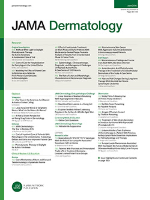
JAMA Dermatology
Scope & Guideline
Championing Open Access for Global Dermatological Progress.
Introduction
Aims and Scopes
- Clinical Trials and Therapeutics:
The journal publishes original research on clinical trials evaluating new dermatological therapies, including pharmacological agents and treatment protocols for various skin conditions. - Public Health and Dermatology:
JAMA Dermatology focuses on the intersection of dermatology and public health, exploring epidemiological studies, skin cancer screening, and the impact of social determinants on skin health. - Patient-Centric Research:
Emphasis is placed on research that prioritizes patient outcomes, experiences, and quality of life, including patient-reported outcome measures and their implications in clinical practice. - Genetics and Molecular Dermatology:
The journal explores genetic factors and molecular mechanisms associated with dermatological diseases, contributing to a better understanding of disease pathogenesis and treatment responses. - Technological Innovations in Dermatology:
Research on the application of technological advancements, including teledermatology, artificial intelligence, and machine learning in clinical settings, is a consistent focus. - Health Disparities and Equity in Dermatology:
JAMA Dermatology addresses health disparities within dermatological care, examining the impact of race, ethnicity, and socioeconomic status on skin diseases and treatment access.
Trending and Emerging
- Biologics and Targeted Therapies:
There is a growing focus on biologic treatments and targeted therapies for chronic skin conditions such as psoriasis and atopic dermatitis, with numerous studies evaluating their efficacy and safety. - Mental Health and Dermatology:
Research exploring the psychological impact of skin diseases, including the mental health burden associated with conditions like acne and alopecia areata, has gained traction. - Teledermatology and Digital Health:
The adoption of teledermatology and digital health solutions has surged, particularly post-pandemic, with studies assessing their effectiveness and patient satisfaction. - Genetic and Molecular Pathways in Skin Conditions:
Emerging research delves into the genetic underpinnings of various dermatological diseases, enhancing understanding and potentially guiding personalized treatments. - Health Inequities and Access to Care:
Exploration of health disparities in dermatological care, particularly concerning marginalized populations, is increasingly prominent, reflecting a commitment to equity in health. - Environmental Factors and Skin Health:
Research examining the interplay between environmental factors, such as pollution and UV exposure, and skin health is on the rise, addressing broader public health concerns.
Declining or Waning
- Traditional Cosmetic Dermatology:
Research focused on purely cosmetic dermatology procedures has seen a decrease, as there is a growing emphasis on clinically relevant outcomes and evidence-based practices. - General Dermatological Conditions without Novel Insights:
There is a waning interest in studies that do not provide new insights or advancements in understanding common skin conditions, as the field moves towards more innovative and impactful research. - Single-Center Studies with Limited Generalizability:
Publications featuring single-center studies that lack broader applicability or multi-center collaboration are becoming less frequent, as there is a preference for studies with more extensive datasets and diverse populations. - Basic Science Research without Clinical Relevance:
Although basic science remains important, studies that do not connect findings to clinical applications or implications for patient care are less prioritized in recent issues. - Overlapping Topics with Minimal Novelty:
Research that largely reiterates previously established findings without offering new perspectives or methodologies is declining, as the journal seeks to maintain a high standard of originality.
Similar Journals
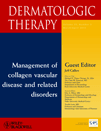
Dermatologic Therapy
Pioneering breakthroughs in skin disease management.Dermatologic Therapy is a leading peer-reviewed journal published by WILEY-HINDAWI that focuses on the multifaceted field of dermatology. Established in 1996 and continuing its profound impact into 2024, the journal has earned an impressive Q1 rating in Dermatology and ranks 11th out of 142 in the Scopus categorization, placing it in the 92nd percentile. With its headquarters in the United Kingdom, the journal's mission is to advance the understanding and treatment of skin diseases through the dissemination of high-quality research, reviews, and clinical information. Although not an open-access journal, it provides extensive access options to ensure that vital research reaches its audience. By leading scholarly discourse and innovation in dermatological treatments, Dermatologic Therapy serves as an essential resource for researchers, clinicians, and students dedicated to improving skin health worldwide.
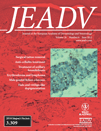
JOURNAL OF THE EUROPEAN ACADEMY OF DERMATOLOGY AND VENEREOLOGY
Empowering Clinicians with Cutting-edge InsightsJOURNAL OF THE EUROPEAN ACADEMY OF DERMATOLOGY AND VENEREOLOGY, published by Wiley, is a premier peer-reviewed journal dedicated to advancing the fields of dermatology and venereology. Since its inception in 1991, this esteemed journal has established itself as a vital resource, providing a platform for innovative research and critical analysis in these important medical disciplines. With an impressive Impact Factor stemming from its Q1 category ranks in both dermatology and infectious diseases, it has achieved a dominant position, ranking #4 out of 142 in Dermatology and #37 out of 344 in Infectious Diseases according to Scopus. Researchers and clinicians alike are encouraged to engage with the rich content and robust discussions presented in its pages, fostering collaboration and cutting-edge advancements in patient care. Access options to this journal can be explored through Wiley, allowing for widespread dissemination and engagement in the academic community. The journal’s ongoing commitment to excellence ensures its relevance and significance in shaping the future of dermatological and venereological research.
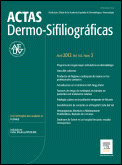
Actas Dermo-Sifiliograficas
Exploring Innovations in Dermatology and PathologyActas Dermo-Sifiliograficas, published by Elsevier España, stands as a pivotal resource in the realms of dermatology, histology, and pathology and forensic medicine. With its ISSN of 0001-7310 and E-ISSN 1578-2190, this esteemed journal has transitioned to an Open Access model since 2020, facilitating broader dissemination of impactful research. Operating from its Madrid headquarters, it has been a vital platform for scholarly exchange since its inception in 1945, continuing through its converged years until 2024. The journal holds a Q3 ranking in dermatology, histology, and pathology and forensic medicine as of 2023, reflecting its relevance in the academic community where it ranks 79th in dermatology and 126th in pathology among its peers. With a commitment to advancing knowledge and practice in its fields, Actas Dermo-Sifiliograficas serves as an essential repository for researchers, professionals, and students seeking to engage with the latest findings and innovative perspectives in skin and disease research.
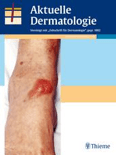
AKTUELLE DERMATOLOGIE
Unveiling Insights for Evolving Dermatological PracticesAKTUELLE DERMATOLOGIE is a distinguished journal in the field of Dermatology, published by GEORG THIEME VERLAG KG in Germany. With a commitment to advancing knowledge and practice in dermatological science, the journal has regularly featured research articles, reviews, and case studies since its inception in 1975 and continues to publish contributions through 2024. Despite being categorized in the lower quartile (Q4) of dermatology journals and holding a Scopus rank of #127 out of 142, it plays a pivotal role in disseminating valuable insights that support ongoing education and research in the discipline. The journal provides an essential platform for both seasoned professionals and budding researchers to share their findings, explore emerging trends, and discuss clinical practices, all while serving the needs of an evolving medical landscape. Access to its content may be restricted, but the journal remains a crucial reference for those invested in the future of dermatological research and patient care.
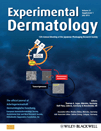
EXPERIMENTAL DERMATOLOGY
Advancing the Science of Skin HealthEXPERIMENTAL DERMATOLOGY, published by WILEY, is a leading journal in the fields of Biochemistry and Dermatology, with impressive rankings including Q1 status in both categories as of 2023. With its ISSN 0906-6705 and E-ISSN 1600-0625, the journal offers a reputable platform for disseminating cutting-edge research and insights into skin biology and related health issues. As a pivotal resource for professionals, researchers, and students alike, EXPERIMENTAL DERMATOLOGY includes a broad scope of topics, fostering a deeper understanding of dermatological conditions and enhancing new therapeutic strategies. The journal’s distinguished performance is highlighted by its Scopus rankings, which place it at the 91st percentile in Medicine-Dermatology and the 65th in Biochemistry. While not an open-access publication, the journal remains committed to ensuring the accessibility of crucial developments within the dermatological community worldwide, facilitating the advancement of both clinical practice and academic inquiry.
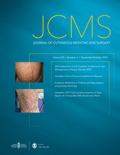
JOURNAL OF CUTANEOUS MEDICINE AND SURGERY
Connecting research and clinical expertise in dermatology.The Journal of Cutaneous Medicine and Surgery is a premier publication in the fields of dermatology and surgery, dedicated to advancing the scientific understanding of skin-related conditions and surgical techniques. Published by SAGE Publications Inc, this esteemed journal features a rich repository of peer-reviewed research, reviews, and clinical studies, ensuring that it remains at the forefront of dermatologic and surgical innovation. With an impressive impact factor and a ranking in the top quartile (Q1) of both dermatology and surgery categories for 2023, it is recognized as a vital resource for professionals, researchers, and students alike. The journal has consistently made significant contributions to the knowledge base that guides clinical practice and surgical decision-making, fostering a deeper understanding of the complexities involved in cutaneous medicine. For comprehensive updates, researchers can access this journal through SAGE’s platform, which supports the dissemination of high-quality research findings to a global audience.
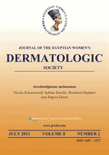
Journal of Egyptian Womens Dermatological Society
Advancing Dermatological Insights for Women's Unique NeedsThe Journal of Egyptian Women's Dermatological Society, published by Wolters Kluwer Medknow Publications, is an essential platform dedicated to advancing the field of dermatology through a valuable focus on women's health issues. Established to provide an open access outlet since 2019, this journal aims to disseminate research, case studies, and reviews that address the unique dermatological needs and concerns of women, particularly in the Egyptian context. Despite its current ranking in the Q4 category in dermatology and a Scopus rank of #117 out of 142 with a 17th percentile, the journal serves a critical role in fostering scholarly communication among researchers, clinicians, and academicians. With a commitment to promoting knowledge advancement and community engagement, this journal invites submissions that align with its objectives, specifically geared towards empirical research and innovative practices in dermatology impacting women's health.
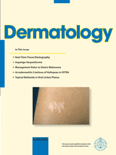
DERMATOLOGY
Fostering collaboration in the pursuit of skin health.DERMATOLOGY, an esteemed journal published by KARGER, is a vital resource in the field of dermatological research and clinical practice. Established in 1893, with its comprehensive coverage extending to 2024, this journal has earned its place as a leading publication, holding a prestigious Q1 quartile ranking in Dermatology and ranking 15th out of 142 in the Scopus Medicine - Dermatology category, reflecting its 89th percentile standing within the discipline. The journal aims to disseminate innovative research findings, critical reviews, and clinical studies that advance the understanding of skin disorders and their treatments. While primarily available through institutional subscriptions, DERMATOLOGY remains committed to enhancing accessibility and fostering international collaboration among researchers, professionals, and students in the dermatological community. Its rigorous peer-review process guarantees the highest quality of published works, making it an essential reference for those dedicated to advancing dermatological science and improving patient care.
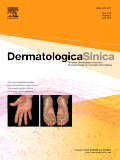
Dermatologica Sinica
Empowering Scholars in Dermatology Through Open AccessDermatologica Sinica, published by Wolters Kluwer Medknow Publications, is an esteemed open-access journal in the field of dermatology that has been disseminating critical research since its inception in 2005. With an E-ISSN of 2223-330X and an ISSN of 1027-8117, this journal presents a platform for researchers, clinicians, and students to share cutting-edge findings and advancements in dermatological science. As of 2023, it proudly ranks in the Q2 category of dermatology journals and holds a notable position at rank #62 out of 142 in the Scopus Medicine - Dermatology category, placing it in the 56th percentile for impact. The journal transitioned to an open-access model in 2016, enhancing accessibility and visibility for groundbreaking studies worldwide. With a commitment to fostering innovation in the dermatological community, Dermatologica Sinica aims to advance the understanding and treatment of skin diseases while encouraging scholarly dialogue among practitioners and researchers across the globe.

JOURNAL OF THE AMERICAN ACADEMY OF DERMATOLOGY
Unveiling the latest in dermatological science and therapy.JOURNAL OF THE AMERICAN ACADEMY OF DERMATOLOGY, published by Mosby-Elsevier, stands at the forefront of dermatological research and education. With an impressive impact factor and categorized as Q1 in Dermatology, this journal has established itself as a pivotal resource for healthcare professionals and researchers in the field. Since its inception in 1979, it has provided a platform for high-quality peer-reviewed articles, contributing significantly to advancements in dermatological science and practice through 2024. The journal commands an honorable position, ranking #8 out of 142 in the Scopus database's medicine dermatology category, placing it in the 94th percentile among its peers. Readers can access a wealth of cutting-edge studies, case reports, and reviews that address a broad spectrum of topics, from clinical dermatology to emerging therapies. In addition, the journal's commitment to excellence ensures it remains an essential tool for students, clinicians, and researchers dedicated to improving skin health and furthering knowledge in dermatology.